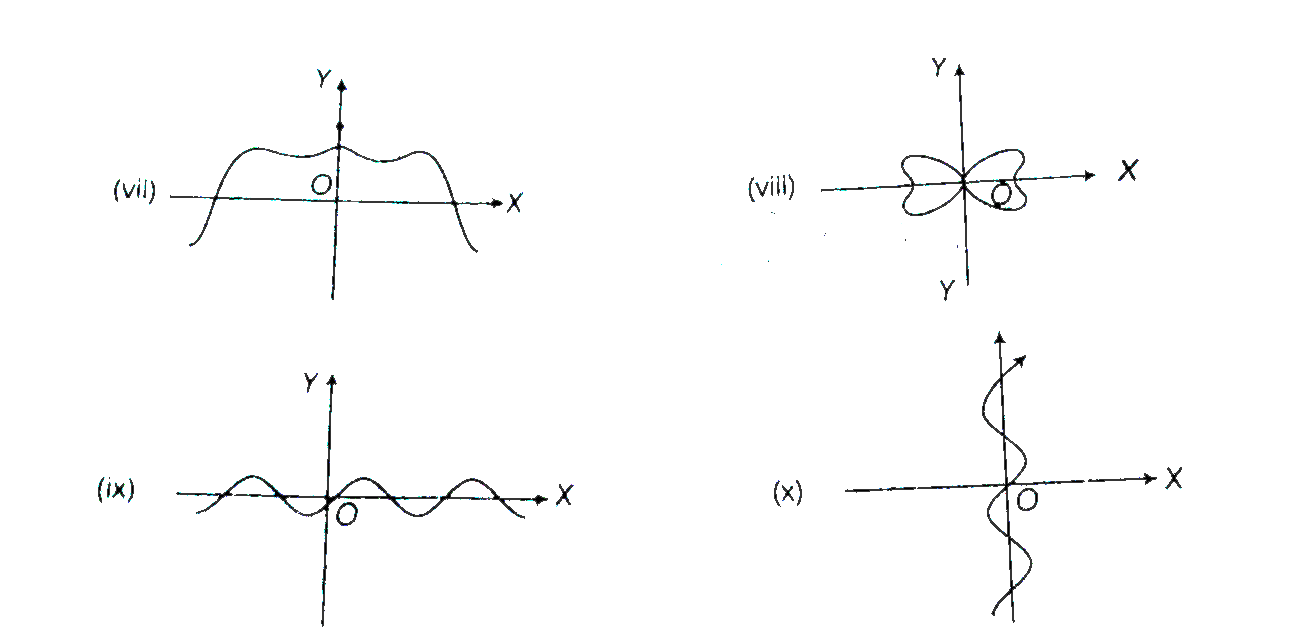If f(x)=[x2]−[x]2, where [ ] denote the greatestinteger function and xε[0,n],≠N then thenumber of elements In the range of f(x) areSolution in Punjabi
(2n+1)
4n-3
3n-3
2n-1
The correct Answer is:D
Step by step video & image solution for If f(x)=[x^2]- [x]^2, where [ ] denote the greatestinteger function and x epsilon [0, n], ne N then thenumber of elements In the range of f(x) are by Maths experts to help you in doubts & scoring excellent marks in Class 12 exams.
Updated on:21/07/2023Topper's Solved these Questions
- FUNCTIONSBOOK - ARIHANT MATHSCHAPTER - FUNCTIONSEXERCISE - Exercise For Session 1
5 Videos
- FUNCTIONSBOOK - ARIHANT MATHSCHAPTER - FUNCTIONSEXERCISE - Exercise For Session 2
6 Videos
- ESSENTIAL MATHEMATICAL TOOLS BOOK - ARIHANT MATHSCHAPTER - ESSENTIAL MATHEMATICAL TOOLS EXERCISE - Exercise (Single Integer Answer Type Questions)
3 Videos
- GRAPHICAL TRANSFORMATIONSBOOK - ARIHANT MATHSCHAPTER - GRAPHICAL TRANSFORMATIONSEXERCISE - Exercise (Questions Asked In Previous 13 Years Exam)
10 Videos
Similar Questions
Which of the following graphs are graphs of a function?


View SolutionThe domain of the function
f(x)=√x2−5x+6+√2x+8−x2 , is
View SolutionThe number of solutions of the equation |x−1|−|2x−5|=2x
View SolutionFind the number of solutions of the equation x21−|x−2|=1, graphically.
View SolutionThe range of f(x)=[1+sinx]+[2+sin(x2)]+[3+sin(x3)]+....+[n+sin(xn)]∀x∈[0,π] , where [.] denotes the greatest integer function, is,
View SolutionThe range of f(x)=({x}^(2)-{x}+1)/({x}^(2)+{x}+1) (where {f} denotes fractional function) is
View SolutionIf the function f(x) defined as f(x)=-(x^(2))/(x),x 0 is continuous but not differentiable at x=0 then find range of n^(2)
View SolutionIf f(x)=[x^(2)]-[x]^(2), where [1 denote the greatestinteger function and x varepsilon[0,n],!=N then thenumber of elements In the range of f(x) are
View SolutionIf f(x)=[x]|x|,x≠0, where [.] denotes the greatest integer function, then f'(1) is
View SolutionIf f(x)=[x]|x|,x≠0 where [.] denotes the greatest integer function, then f'(1) is
View SolutionIf f(x)=[x−2[x2]], (where [⋅] denotes the greatest integer function) x≠0, then incorrect statement
View SolutionIf f(x)={[x]+[−x],x≠2 λ,x=2 and f is continuous at x = 2, where [⋅] denotes greatest integer function, then λ is
View SolutionThe range of f(x)=[1+sinx]+[2+sin(x2)]+[3+sin(x3)]+....+[n+sin(xn)]∀x∈[0,π] , where [.] denotes the greatest integer function, is,
View SolutionThe range of f(x)=[1+sinx]+[2+sinx2]+[3+sinx2]+...+[n+sinxn]∀x∈[0,π], where [.] where denotes the greatest integer function, is
View SolutionIf f(x)=[x−2[x2]], (where [⋅] denotes the greatest integer function) x≠0, then incorrect statement
View SolutionIf f(x)={[x]+[−x],x≠2 λ,x=2 and f is continuous at x = 2, where [⋅] denotes greatest integer function, then λ is
View Solution
